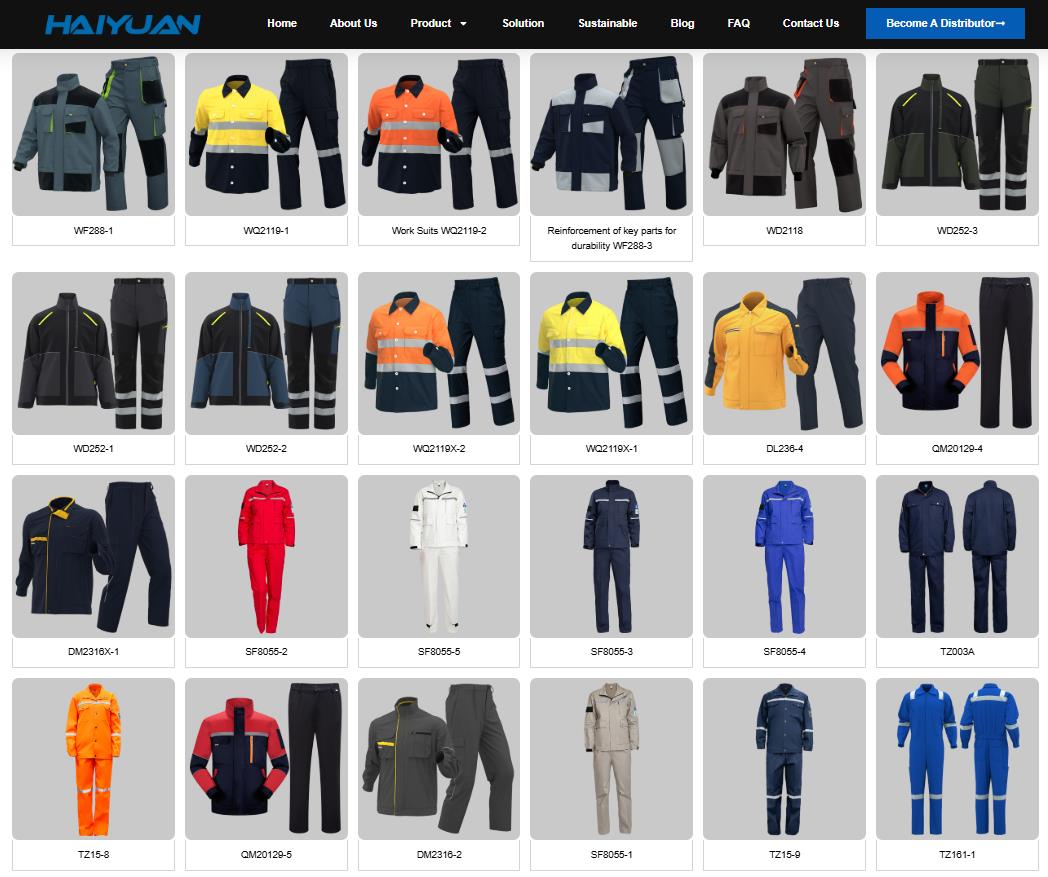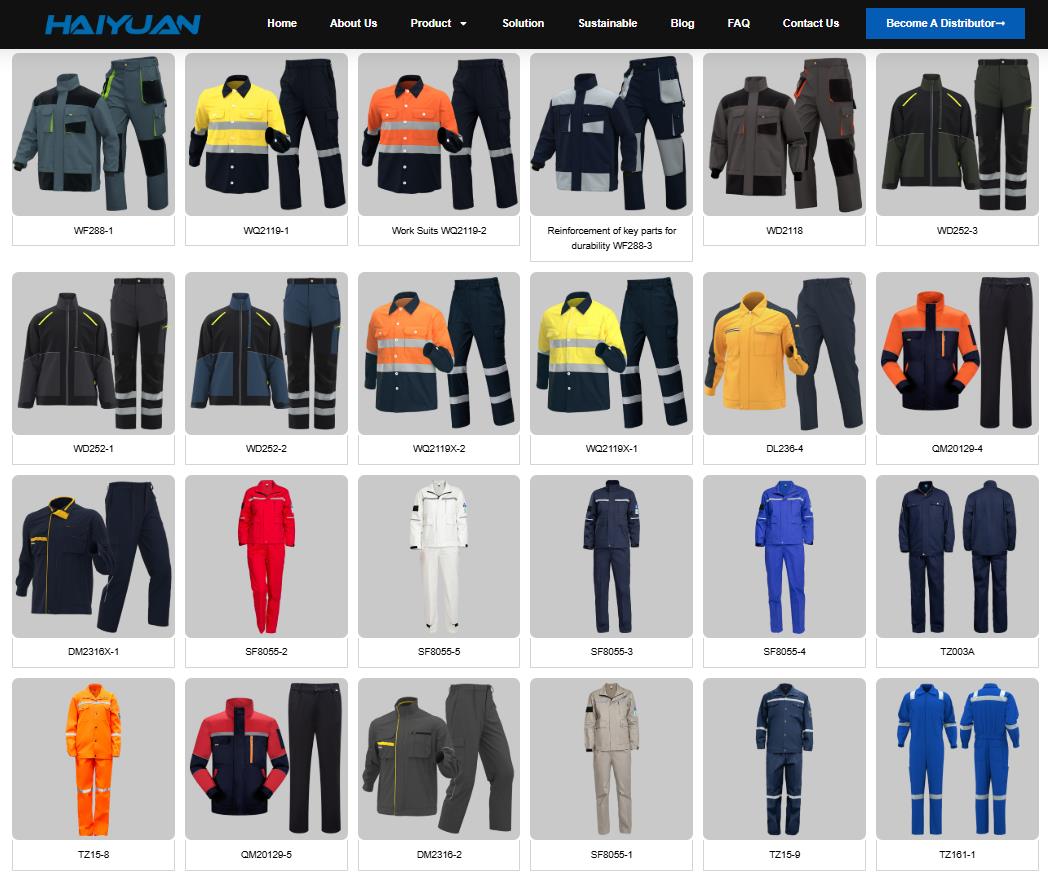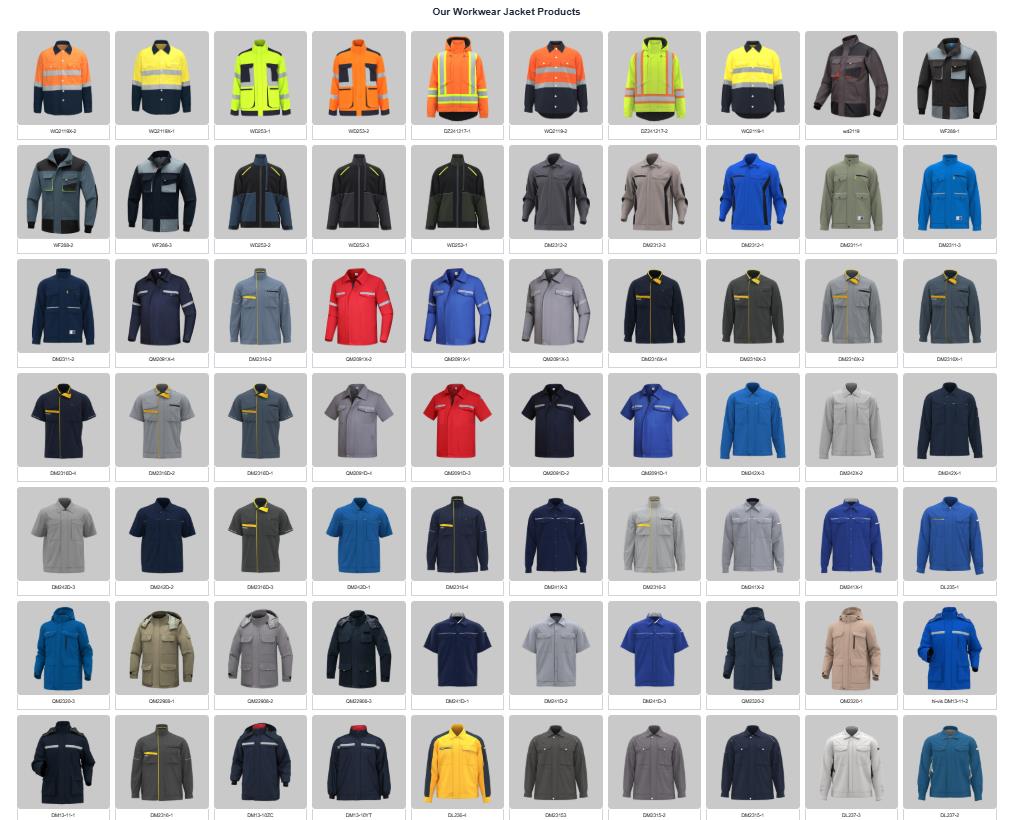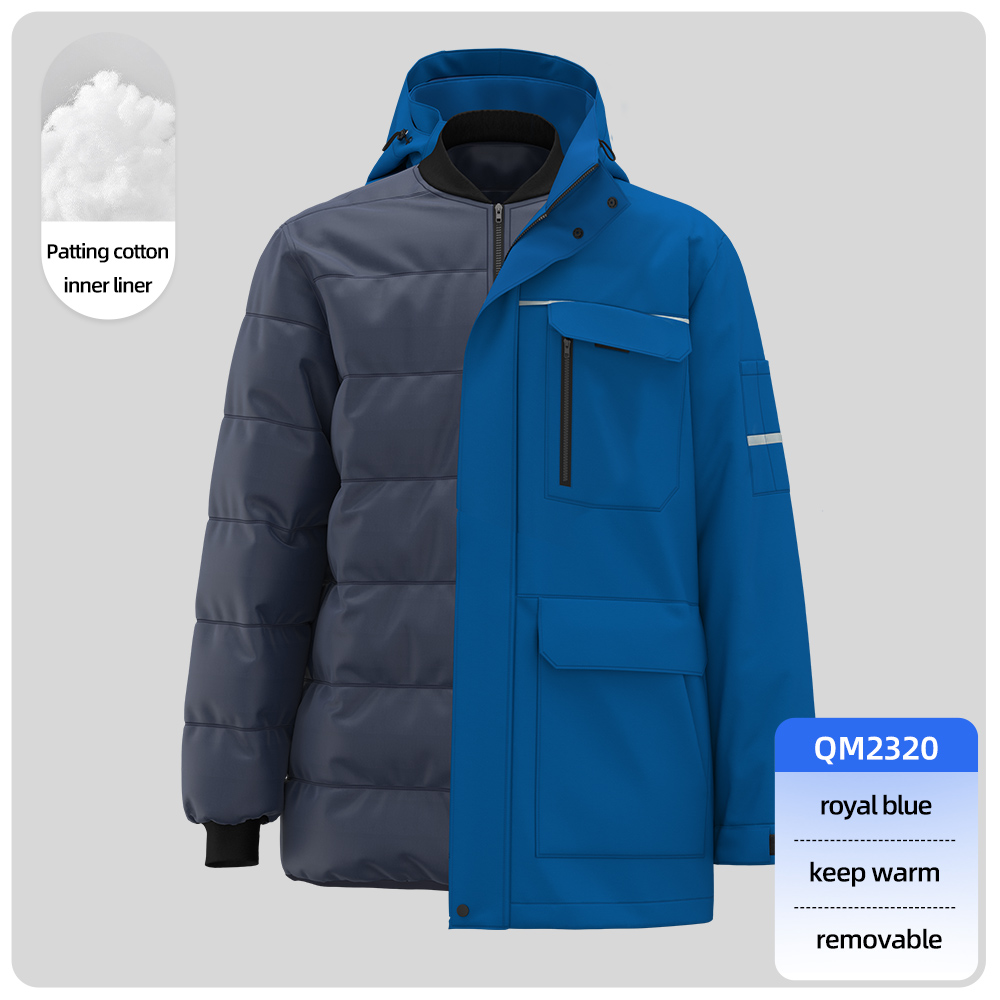Work clothes standards vary depending on the specific type of work clothes and their protection goals. Here are some of the production and inspection standards related to work clothes:
EN ISO 20471: This is the European standard for high-visibility clothing. It specifies that the clothing must be able to visually communicate the presence of the user.
EN 343: This standard applies to protective clothing against rain, snow, fog and ground moisture, clothing used to protect against inclement weather. It specifies requirements for resistance to water penetration and water vapor. Garments that meet this standard are weatherproof. Therefore, they are designed to protect you from the inclement weather outdoors, but only at temperatures above -5°C.
EN ISO 11612: This standard applies to protective clothing for protection against heat and fire. It specifies the performance requirements for clothing used to protect the wearer’s body (excluding the hands).

EN ISO 11611: This standard applies to protective clothing used in welding and related processes. It specifies the minimum essential safety requirements and test methods for protective clothing.
EN 1149-5: This is the European standard for anti-static clothing. It specifies requirements for antistatic protective clothing.
EN 13034: This standard applies to protective clothing against liquid chemicals. It specifies minimum requirements for chemical protective clothing that is resistant to penetration by liquid chemicals.
EN ISO 14116: This standard applies to protective clothing against fire and heat. It specifies limited flame spread performance requirements for materials, material assemblies and protective clothing.
EN 381: This standard applies to protective clothing for users of hand-held chain saws.
ASTM F1506: This is a US standard for flame retardant and arc resistant textile materials for clothing worn by electricians exposed to momentary electric arcs and related thermal hazards.
EN 342 standard: The EN 342 standard specifies the cold resistance rating of clothing. Clothing that meets this standard is designed to be worn outdoors or in cold rooms below -5°C. EN 342 standard clothing is classified according to two criteria: breathability and resistance to evaporation (breathability).
EN 471 standard: High visibility, EN 471 standard certifies garments with reflective, fluorescent or reflective tape properties. These devices can warn the presence of personnel in low visibility conditions. Such garments are called high visibility clothing or signal clothing. The EN 471 standard divides garments into three categories based on the fluorescent and reflective materials on the surface of the garment.
- Discover our range of high visibility clothing
ISO 15797:2017 specifies test procedures and equipment that can be used to evaluate industrial laundry work clothes (including certain personal protective equipment (PPE) garments, where applicable). These procedures and equipment can serve as the basis for testing relevant properties such as dimensional stability, color properties, wrinkling, seam wrinkling, pilling, and general visual effects. ISO 15797:2017 does not provide a description and specification of the procedures and equipment used by industrial laundry personnel. Since it is generally impractical to reproduce the industrial laundry process (washing and drying/finishing) in a laboratory environment, this document provides a method using defined medium-scale equipment and rigorous test procedures that can be used to evaluate industrial laundry work clothes.
Since ISO 15797:2017 simulates real industrial washing conditions, in some cases it is recommended that workwear be tested in actual industrial washing equipment and processes in use when making final determinations on product and process compatibility.
Please note that these are only some of the standards relevant to workwear. The specific standard that applies to a particular garment depends on its intended use and the hazards it is designed to protect against.





